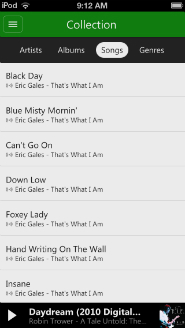
Microsoft waded boldly into new waters today by extending its Xbox Music service to non-Windows mobile devices, and eliminating subscription fees from the desktop web version.
The maneuver comes one day before Apple’s iPhone/iOS 7 event on Tuesday. The timing seems intended to counter the soon-to-be-launched iTunes Radio service, while also driving a stake into the ground occupied by Spotify and Rdio.
As of today, Xbox Music has a familiar two-tiered model. Unsubscribed users (the free tier) can hear music through the desktop interface, but not in the mobile app. Subscribed users (the payment tier) can listen to the “Radio” portion of the service (formerly called Smart DJ), and will, in future versions, be able to download tracks to their smartphones for offline playback.
By releasing Xbox Music apps on iOS and Android platforms, Microsoft is implicitly acknowledging the distant third-place position of Windows mobile devices, and that Xbox gamers likely do not carry Windows phones. Stepping into competing ecosystems is a necessary distribution tactic to fully engage the existing Xbox user base.
While it’s easy to interpret the expansion of Xbox Music as a “Watch out Spotify” moment, Microsoft’s service is currently rudimentary compared to the more sophisticated Spotify client and app experiences. Entrenched users of existing services have invested in their favorite platforms by developing social relationships, making service-specific playlists, and downloading subscription tracks for offline listening. This “service equity” immunizes the platform from user churn to some extent.
At the same time, Spotify and all other independent listening platforms have reason to fear the usage clout of the major ecosystem companies — Apple (iOS), Google (Android), Microsoft (Windows 8.x), and Amazon (Prime, if it ever gets into Internet radio) and their massive built-in audiences.
